Formatting is crucial in crafting a high-quality, well-structured, eye-catching, and reader-friendly blog post. It is essential to ensure that your readers remain interested and establish a distinct blog post style.
If you’re seeking to produce more captivating content with ease, then you can refer to this comprehensive guide titled “How To Format A Blog Post, Step By Step.” This guide will assist you in creating compelling content that resonates with your audience and boosts engagement.
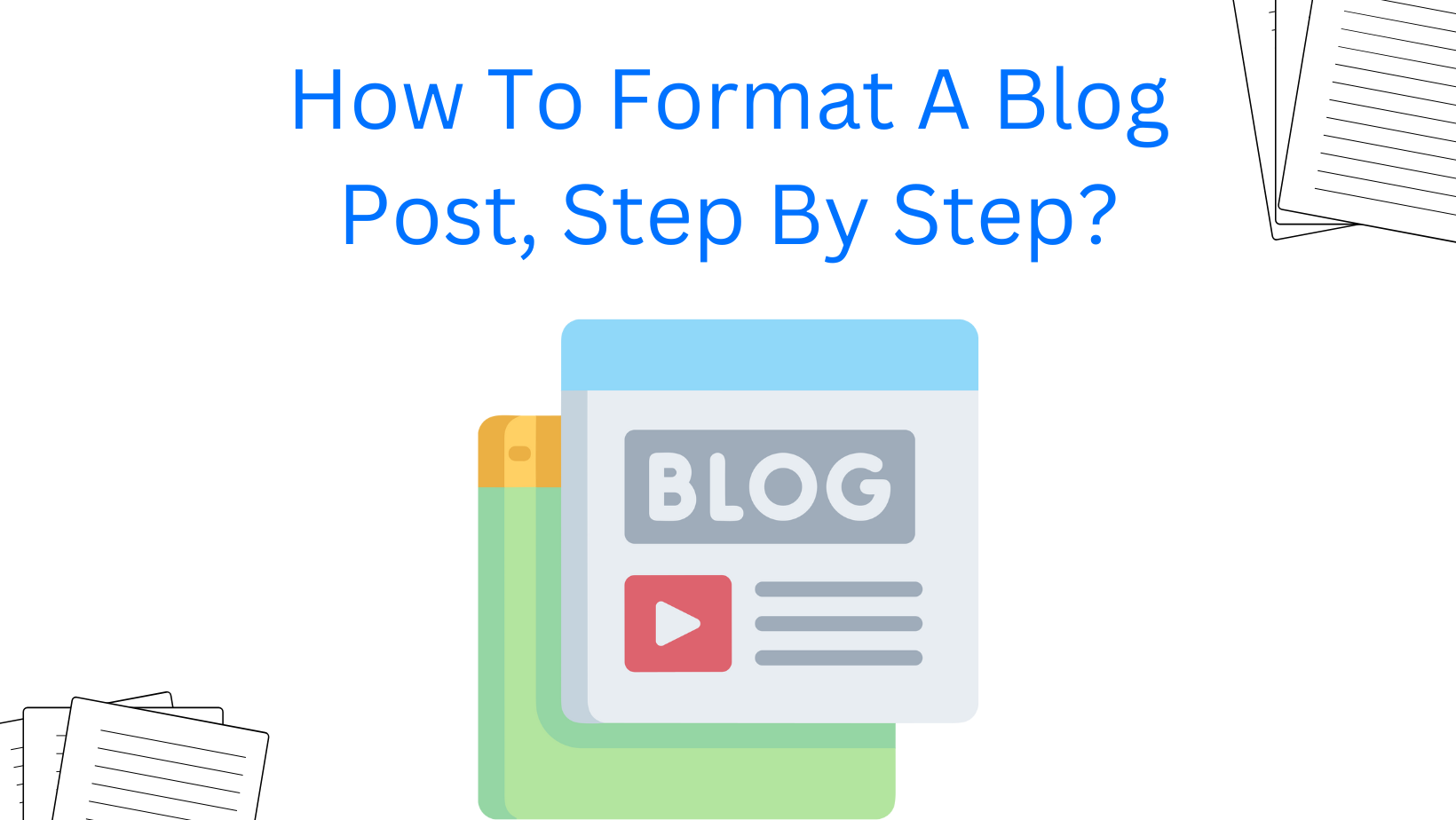
Page Contents:
Importance of Formatting a Blog Post
When it comes to writing a blog post, several factors contribute to its success, and one of the most crucial aspects is formatting. Proper formatting can make all the difference between a post that is easy to read, engaging, and memorable, and one that is dull, confusing, and unremarkable.
Good formatting can help break up large blocks of text, highlight important points, and make the content more visually appealing to readers. This can be achieved through the use of headings, subheadings, bullet points, and images, all of which can serve to add structure and clarity to the content.
In addition to enhancing the visual appeal of a blog post, correct formatting can also improve its readability. By using appropriate font sizes, line spacing, and margins, you can make it easier for readers to scan and absorb the information presented, even when they are short on time.
Formatting is an essential factor that can make or break the success of a blog post. By taking the time to pay attention to the details of formatting, you can ensure that your content is well-organized, easy to read, and engaging for your audience.
How To Format A Blog Post, Step By Step?
A blog post can be divided into three parts writing preparation, the body, and the conclusion. These three sections require different types of formatting. Let us now discuss the section-wise formatting practices:
How to format for Pre-Writing Preparation?
Pre-writing preparation is an essential step to ensure a successful writing process. To begin with, the first step is to choose a topic that you find interesting and relevant to your audience.
Once you have selected your topic, it’s essential to conduct thorough research to gather all the necessary information and data related to your topic. This will help you to understand your topic better, and you can identify the key points that you want to include in your writing.
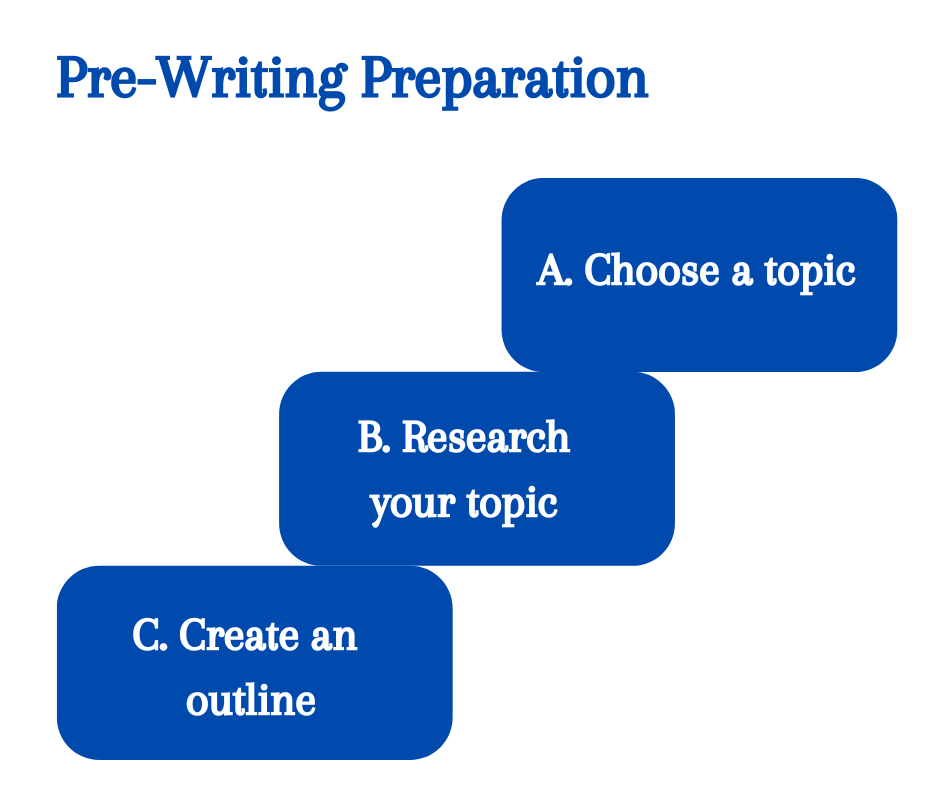
After conducting research, the next step is to create an outline that will serve as a roadmap for your writing. The outline should include all the key points, subtopics, and supporting details that you want to cover in your writing.
This will help you to organize your thoughts and ensure that your writing is well-structured and easy to follow. A well-crafted outline will also help you to stay focused on your topic and avoid going off-topic.
Pre-writing preparation is crucial to help you achieve your writing goals and ensure that your writing is clear, concise, and engaging for your audience.
How To Format The Body Of A blog post?
When it comes to formatting the body of a blog post, there are several key elements to keep in mind. Firstly, it’s important to write an attention-grabbing introduction that hooks the reader in and encourages them to keep reading. This could be a shocking statistic, an interesting anecdote, or a thought-provoking question.
Next, it’s a good idea to divide your content into subheadings. This not only makes your post easier to read, but it also helps to break up long blocks of text and allows readers to quickly find the information they’re looking for.
Using bullet points and numbered lists is also a great way to make your content more readable. This format is particularly effective when presenting information that needs to be understood quickly and clearly.
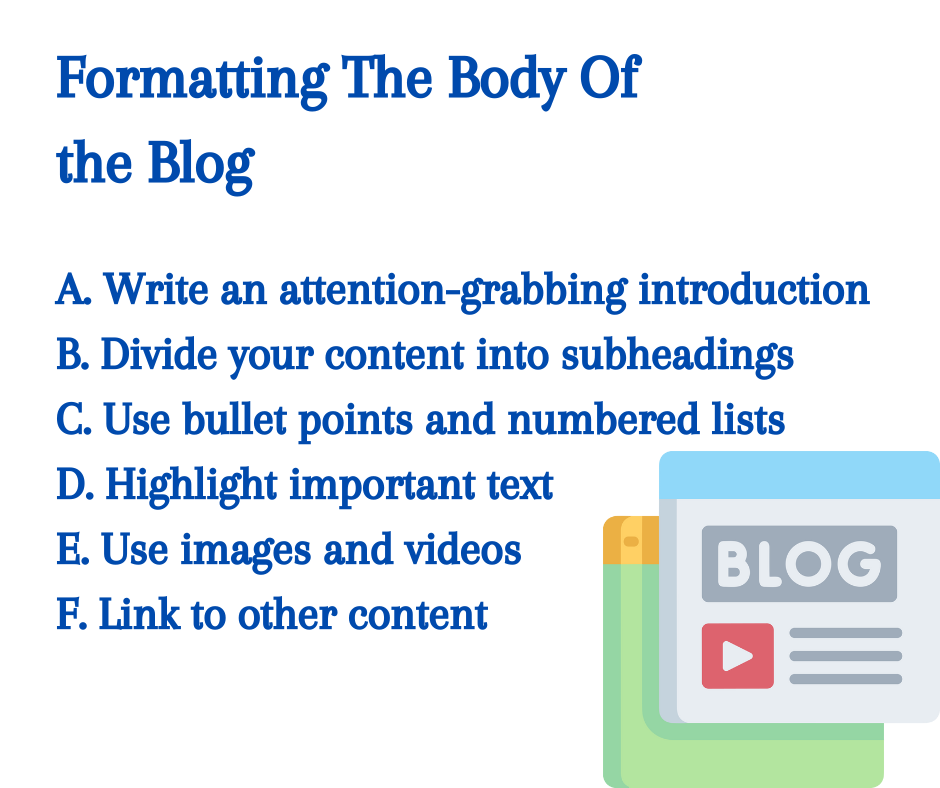
Another way to make your content stand out is to highlight important text. This could be achieved through the use of bold or italicized text, or by using a different color or font.
Incorporating images and videos into your post is another way to make it more engaging and visually appealing. This could be in the form of photographs, infographics, or embedded videos.
Lastly, it’s a good idea to link to other content within your post. This not only helps to establish your credibility as a writer but also encourages readers to spend more time on your website and explore other pages and posts.
How To Format The Conclusion Of A blog post?
Concluding a blog post is a critical step in creating a successful blog. It’s a chance to leave a lasting impression on your audience and make sure they understand the main points of your article.
One way to achieve this is by summarizing the essential takeaways from your post. This helps your readers quickly grasp the key points and retain them for future reference.
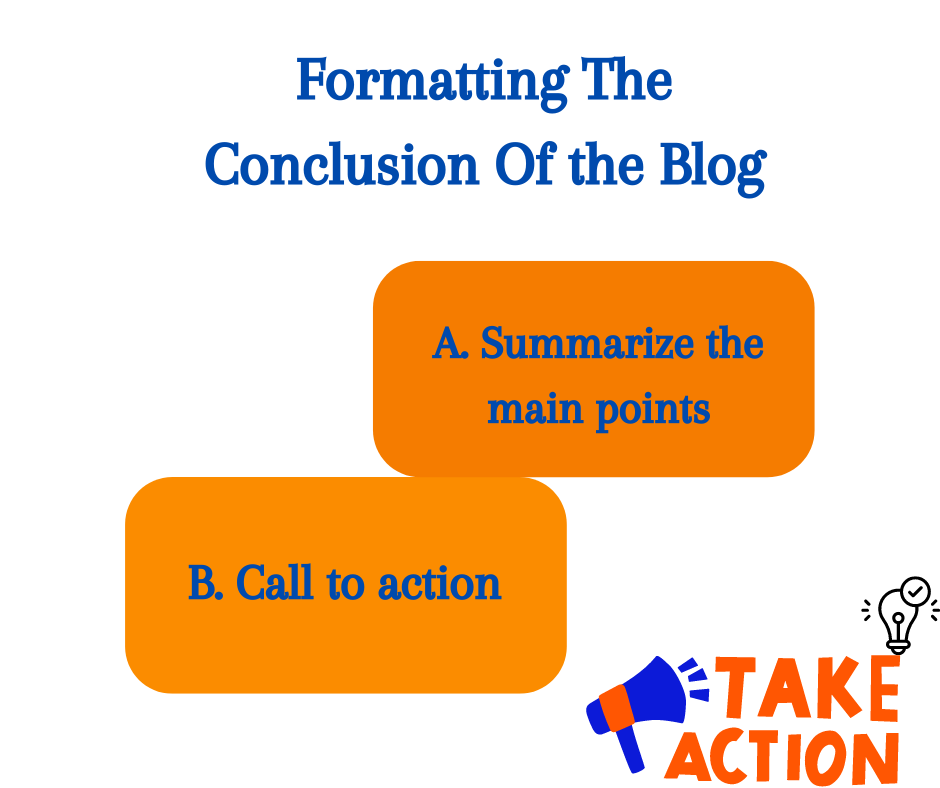
Furthermore, a good conclusion should include a call to action that motivates your readers to take action. This could be anything from inviting them to share their feedback or opinions on the topic to encouraging them to check out more related posts on your blog.
By doing so, you not only engage your audience but also foster a sense of community and encourage them to continue the conversation beyond your post.
An effective call to action can also help you achieve your blogging goals, whether it’s growing your readership, building your brand, or generating more leads. So, make sure to craft a compelling conclusion that leaves a lasting impact on your readers and inspires them to take action.
Post-Writing Editing
When you have finished writing a piece of content, it is important to take some time to review it and make any necessary changes before publishing or submitting it.
This process is called post-writing editing, and it typically involves two main tasks: proofreading for spelling and grammar errors and checking for formatting consistency.
Proofreading is the first step in post-writing editing, and it involves carefully reviewing the text for any mistakes in spelling, grammar, or punctuation.
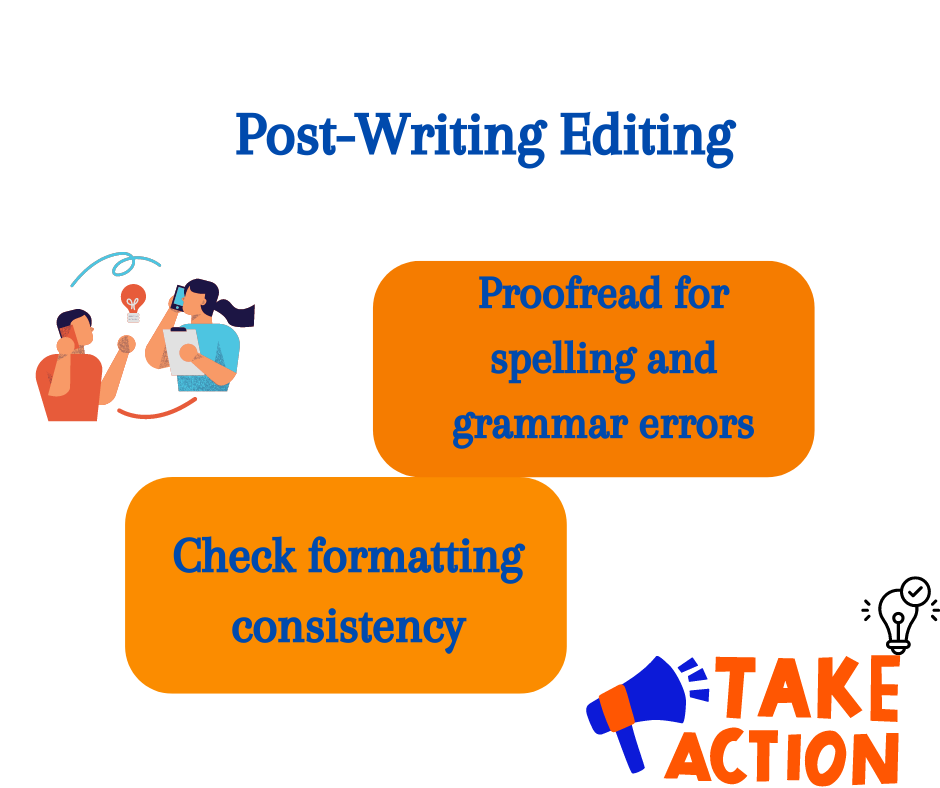
This task requires a keen eye for detail and a good understanding of the rules of the language in which the content is written. Some useful tools to help with proofreading include spell-checkers, grammar-checkers, and online writing communities where you can get feedback from other writers.
Formatting consistency is the second step in post-writing editing, and it involves checking that the content is consistent in style and structure throughout.
This includes things like ensuring headings and subheadings are consistently formatted, checking that margins, font sizes, and line spacing are consistent, and making sure that any images or other media are properly aligned and labeled.
Consistency in formatting can help to make the content more readable and professional-looking, and it can also help to convey a sense of polish and attention to detail.